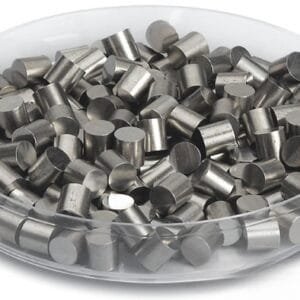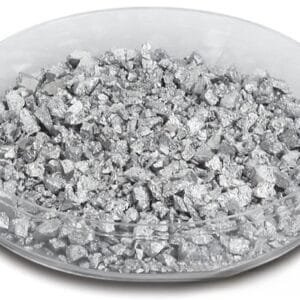Lithium Niobate Evaporation Materials Overview
Thin-Film Mat Engineering (TFM) provides high-purity lithium niobate (LiNbO₃) evaporation materials, essential for achieving high-quality films in various deposition processes. We produce these materials with purity levels up to 99.9995%, backed by stringent quality assurance methods to ensure exceptional reliability.
Related Products: Lithium Evaporation Materials, Niobium Evaporation Materials, Oxide Ceramic Evaporation Materials
Specifications
| Material Type | Lithium Niobate |
| Form | Evaporation Materials |
| Symbol | LiNbO3 |
| Melting Point | 1257 °C |
| Density | 4.65 g/cm3 |
| Purity | 99.5% ~ 99.99% |
| Shape | Powder/ Granule/ Custom-made |
Applications
Lithium niobate evaporation materials are utilized in:
- Deposition Processes: Ideal for semiconductor deposition, chemical vapor deposition (CVD), and physical vapor deposition (PVD).
- Optics: Suitable for wear protection, decorative coatings, and display technologies.
Packaging and Handling
Our lithium niobate materials are carefully tagged and labeled to ensure efficient identification and quality control. We take meticulous measures to prevent any damage during storage and transportation.
Contact Us
At Thin-Film Mat Engineering (TFM), we offer high-purity lithium niobate evaporation materials in various forms, including tablets, granules, rods, and wires. Customized shapes and quantities are available upon request. We also provide evaporation sources, boats, filaments, crucibles, heaters, and e-beam crucible liners. For current pricing and further inquiries, please contact us directly.


 MSDS File
MSDS File



Reviews
There are no reviews yet.